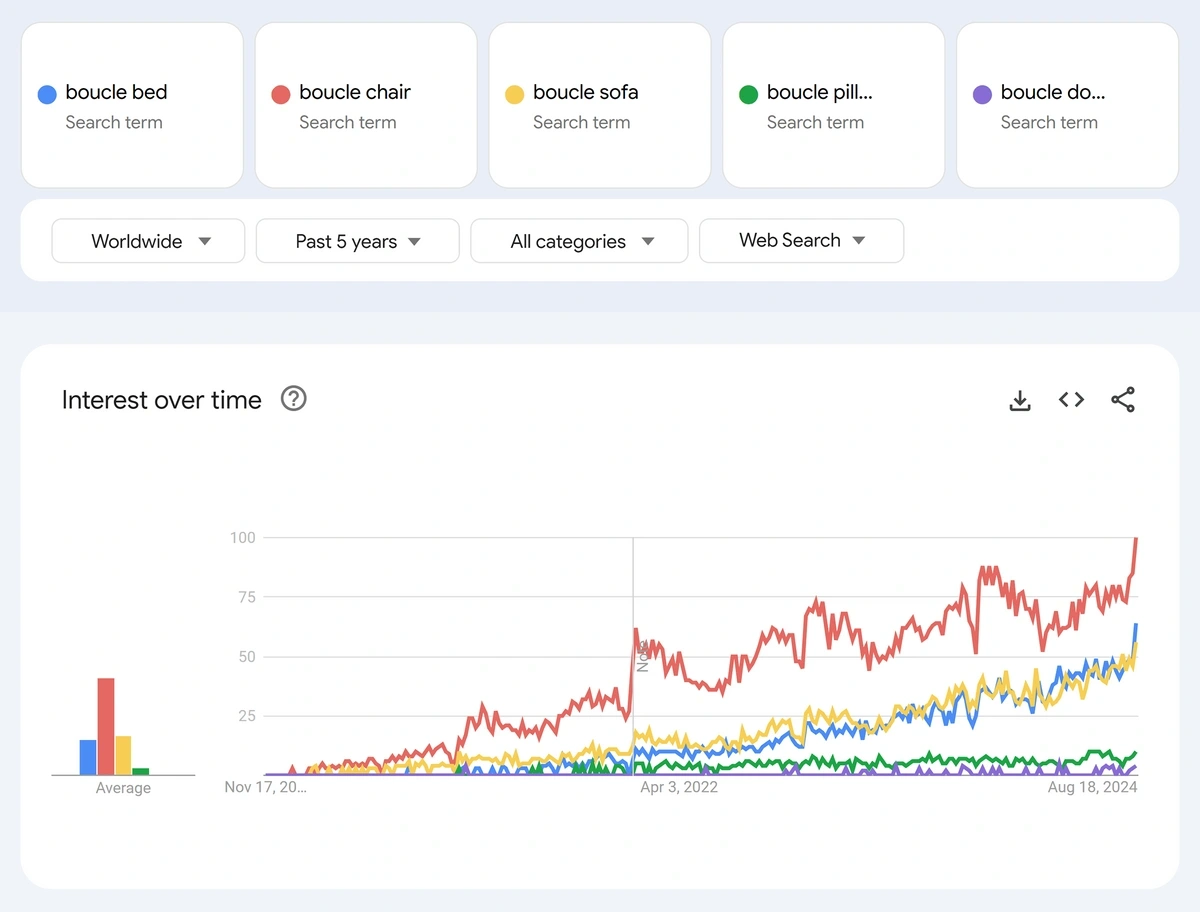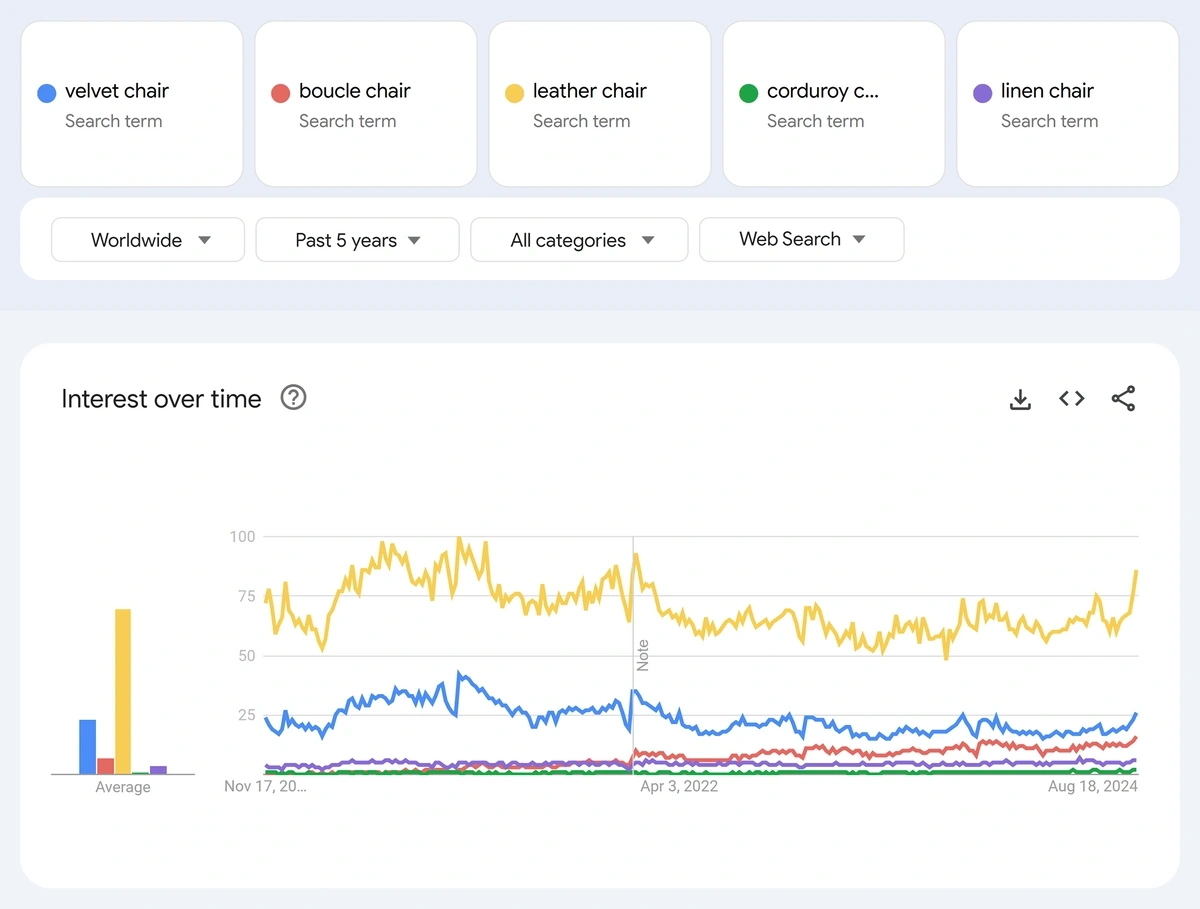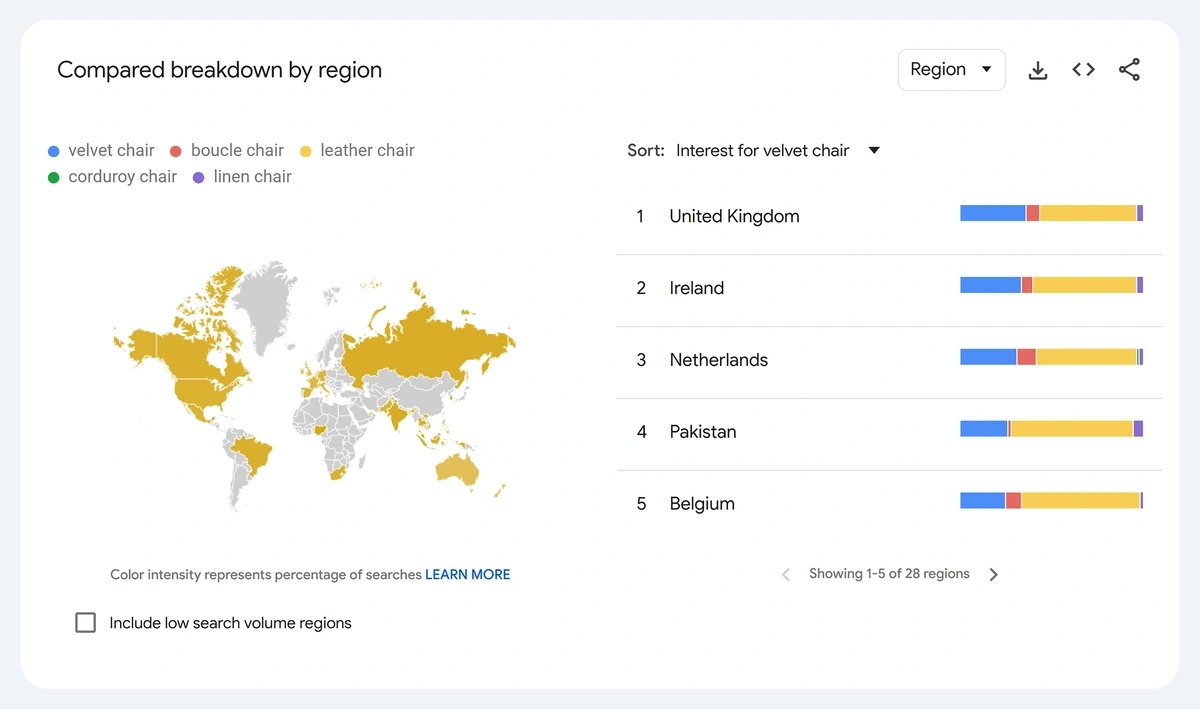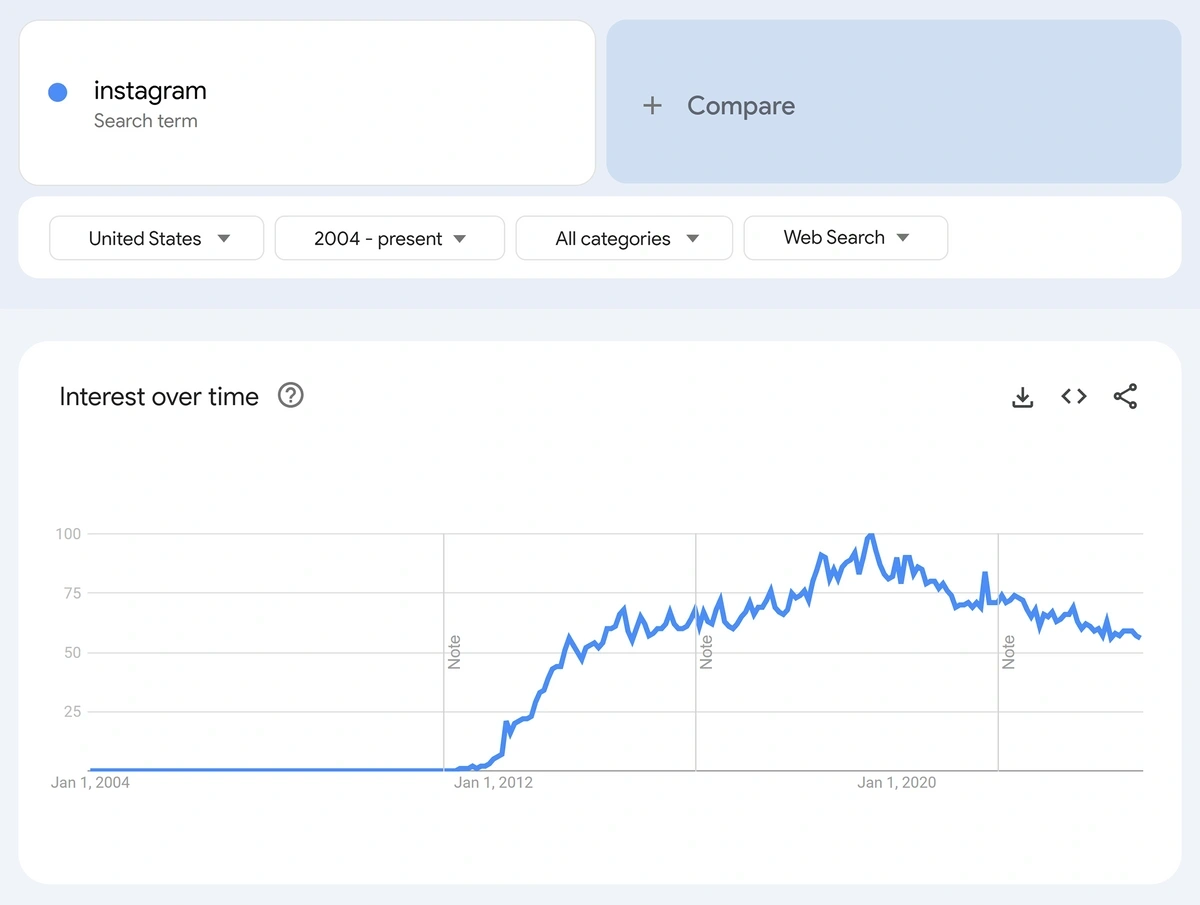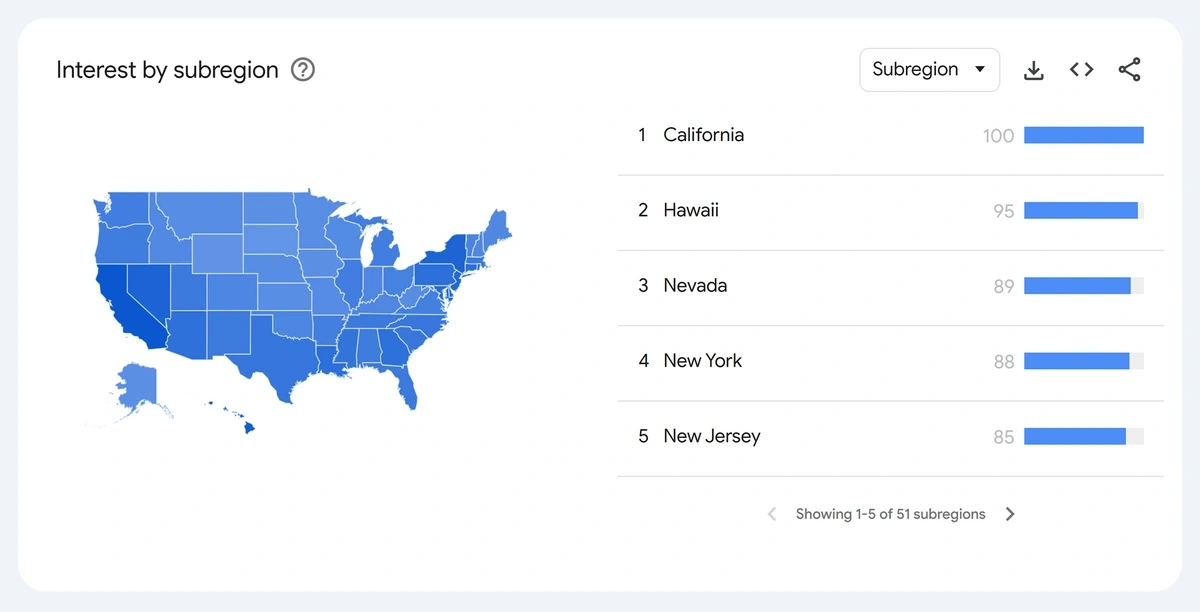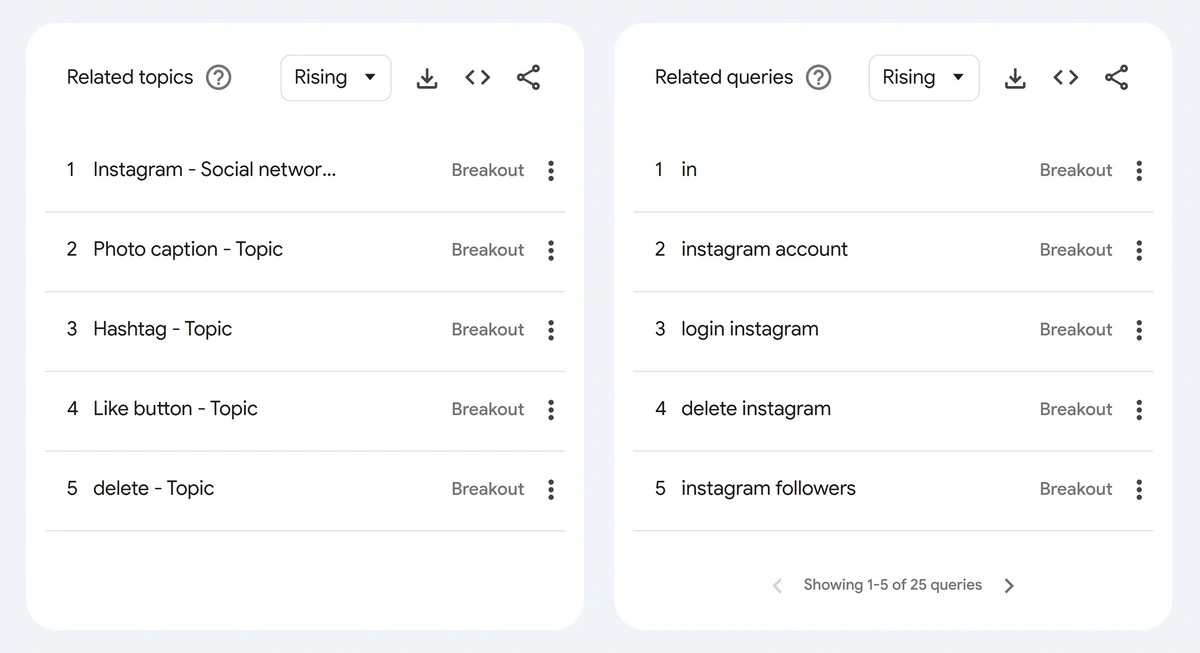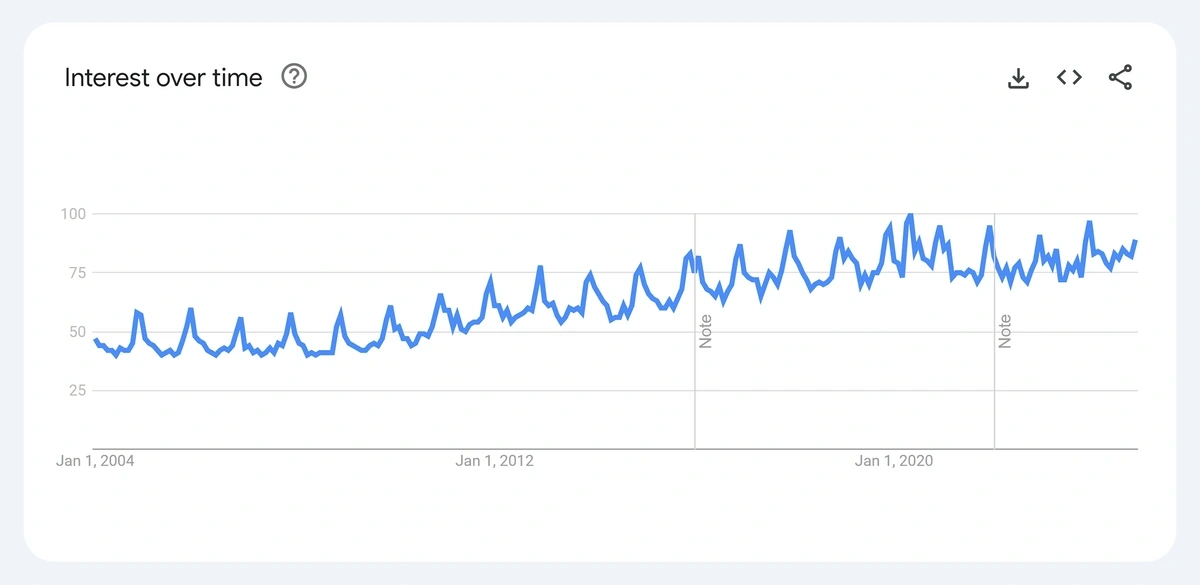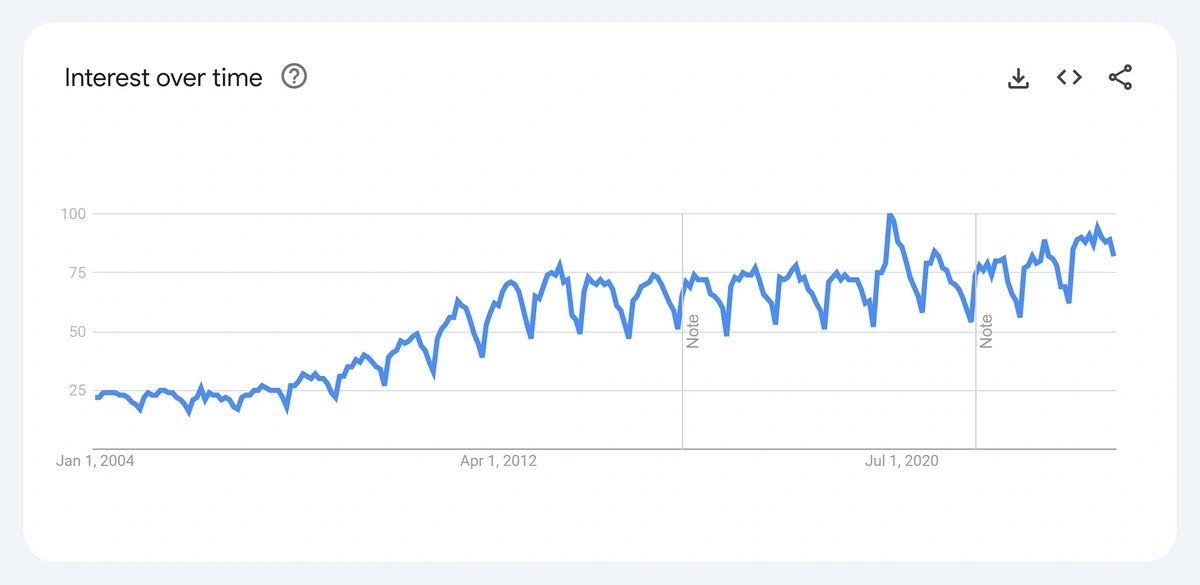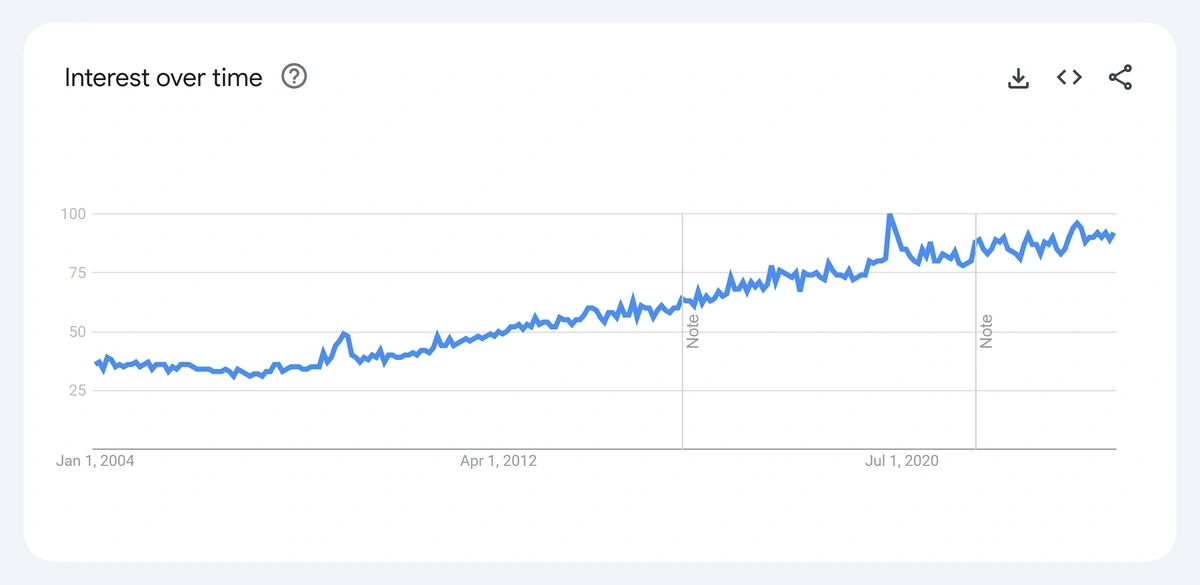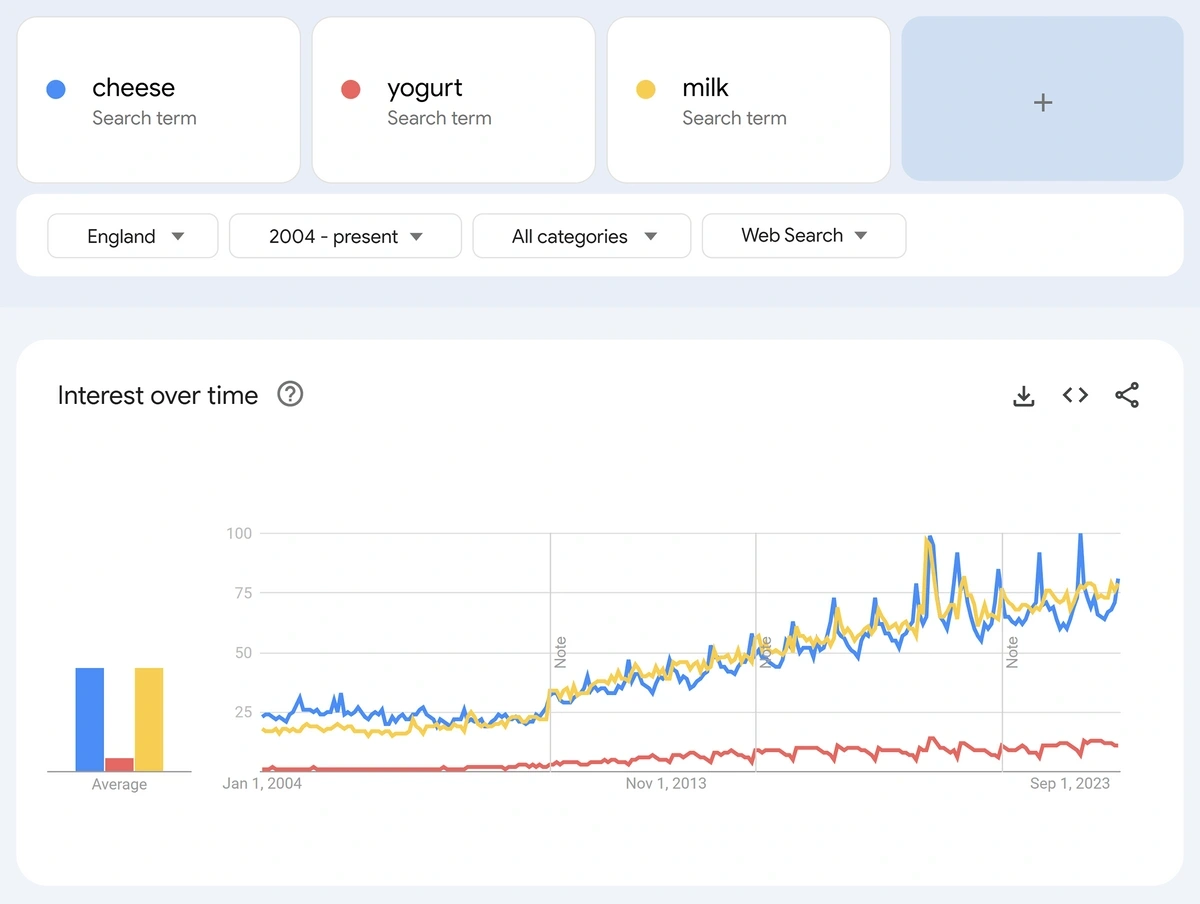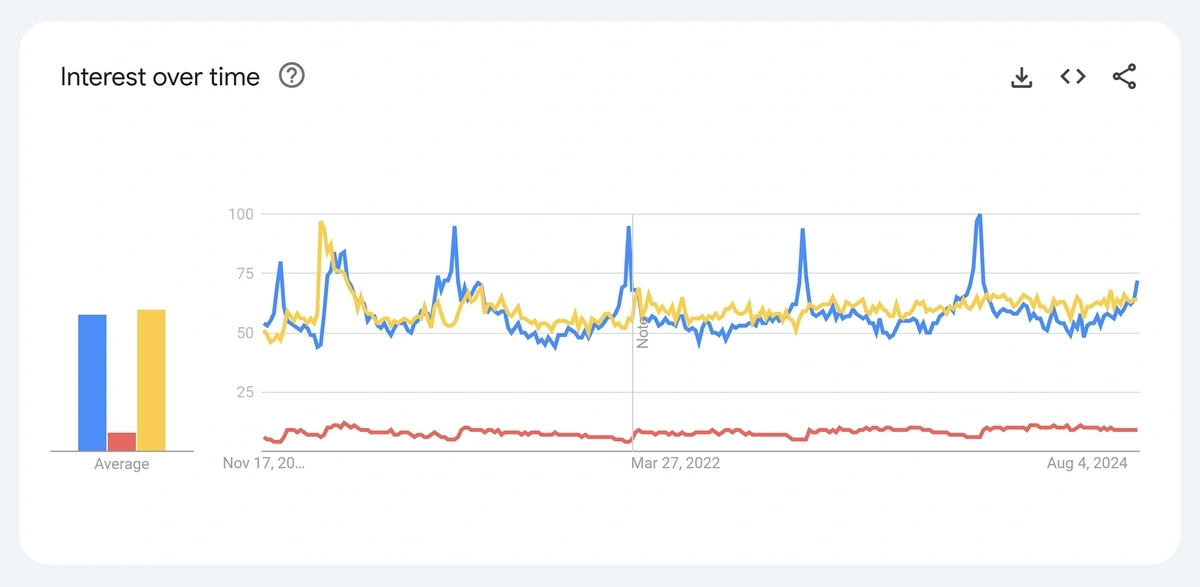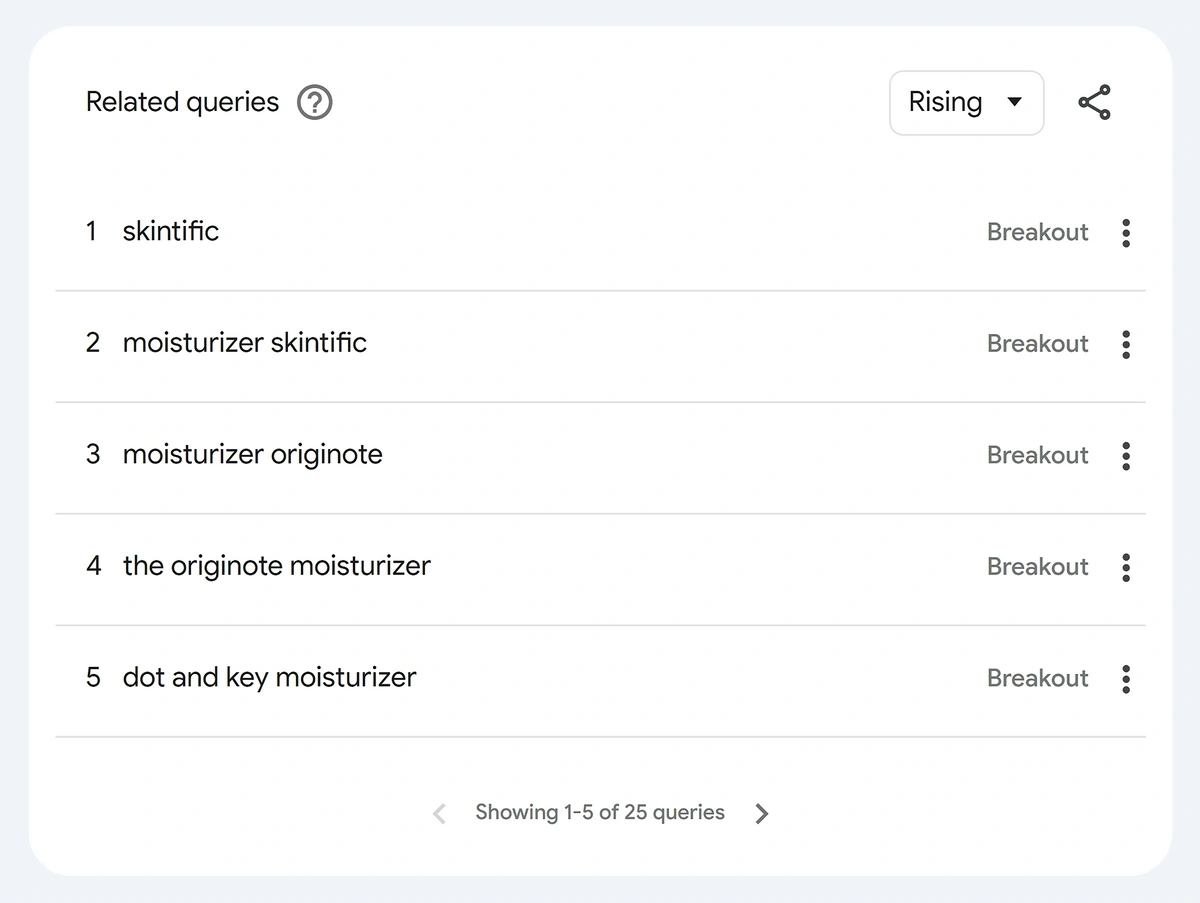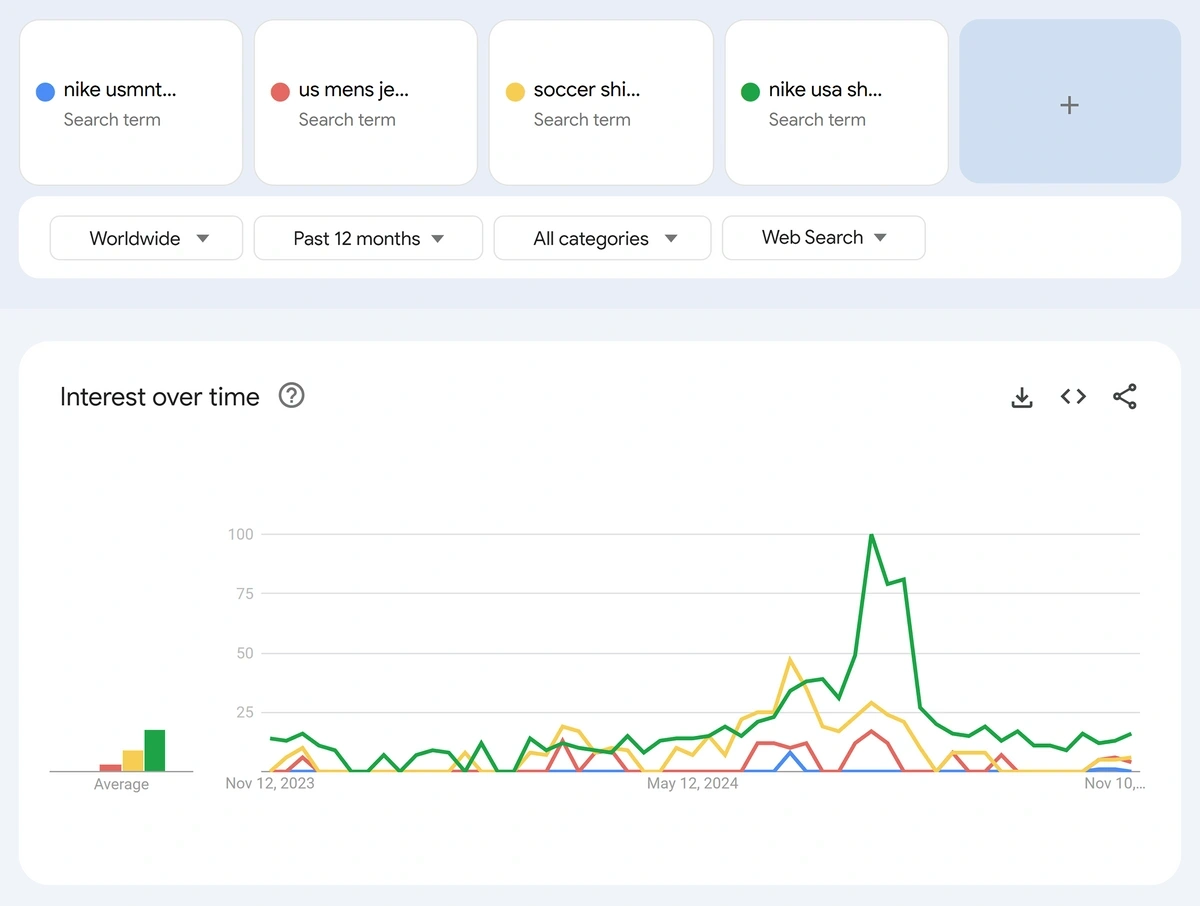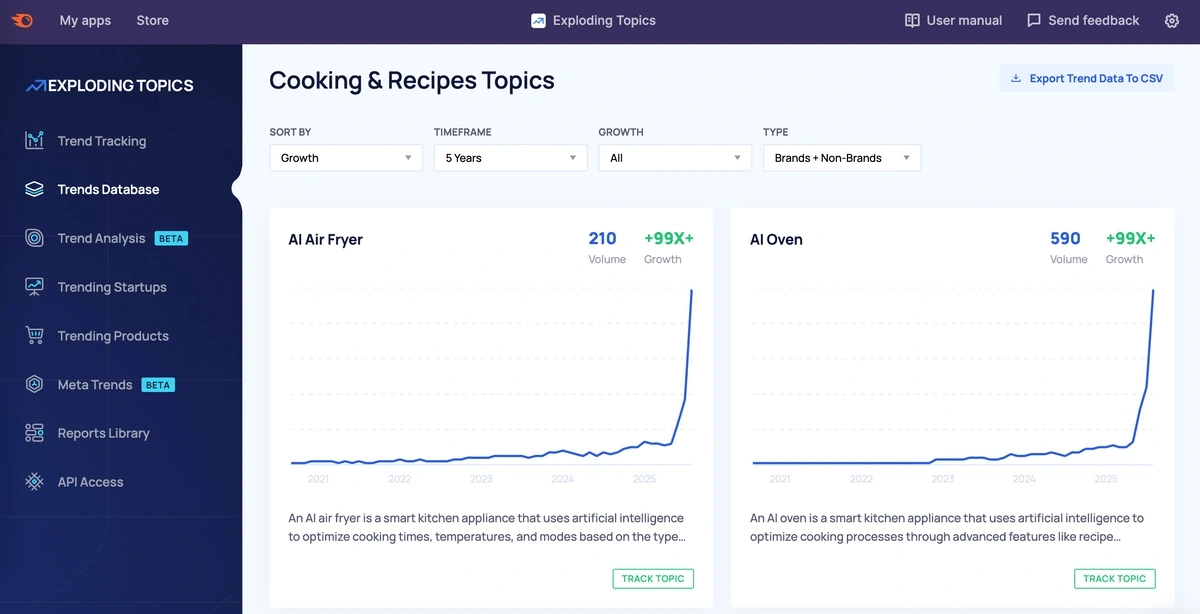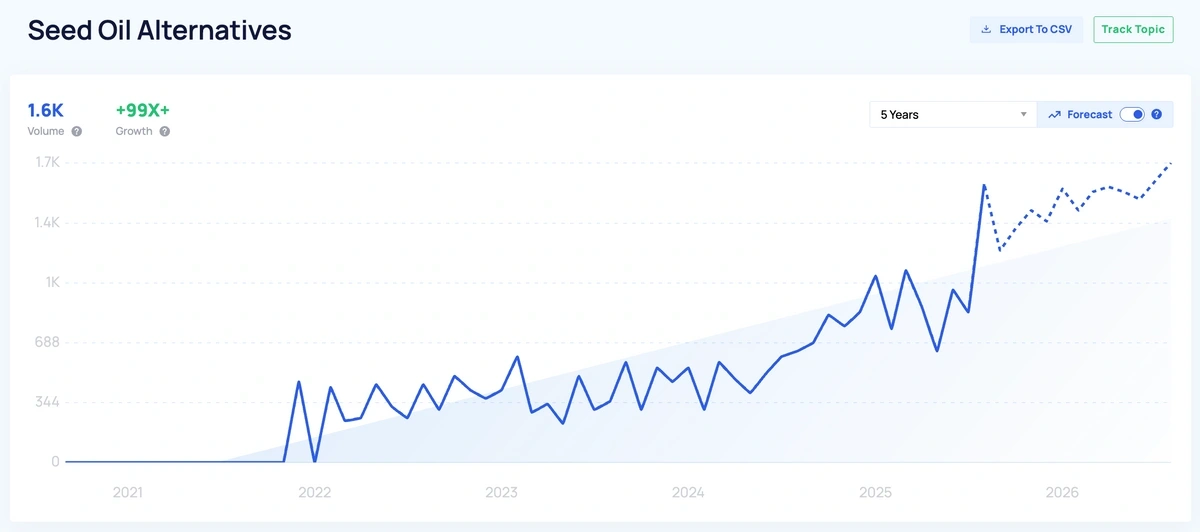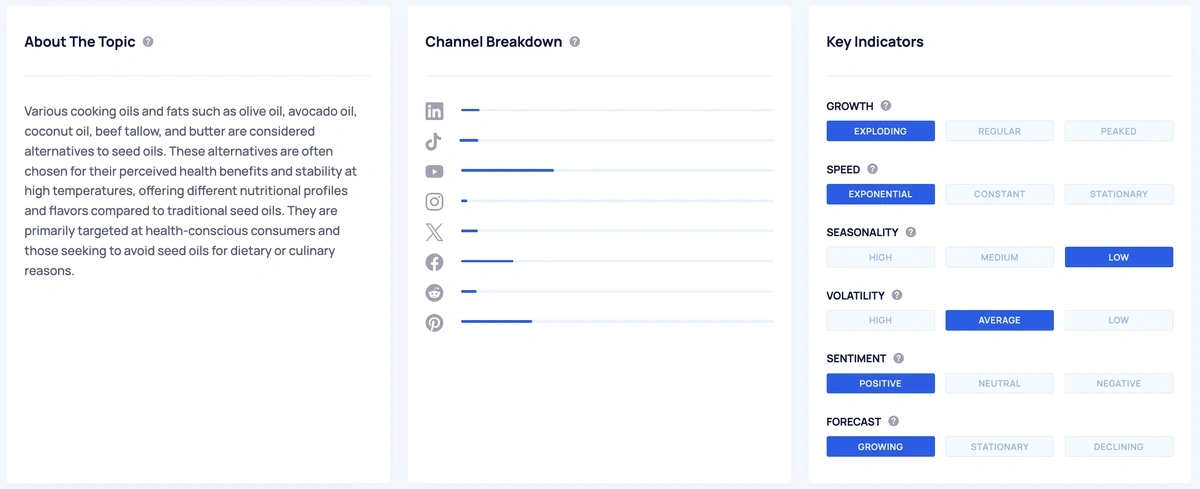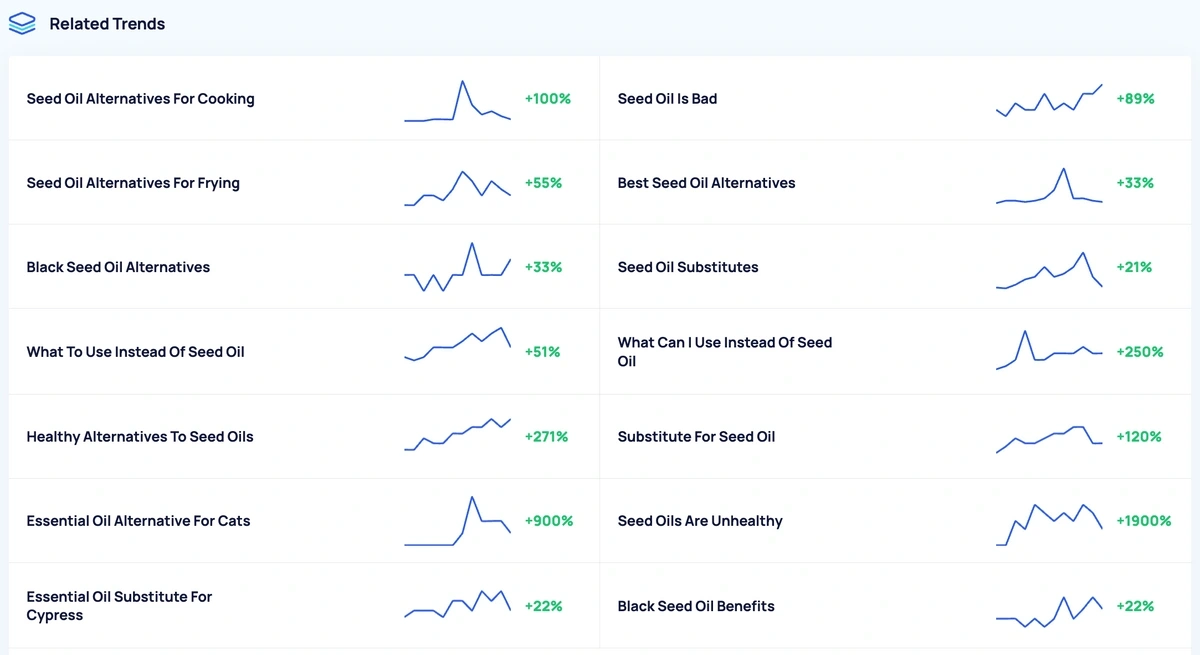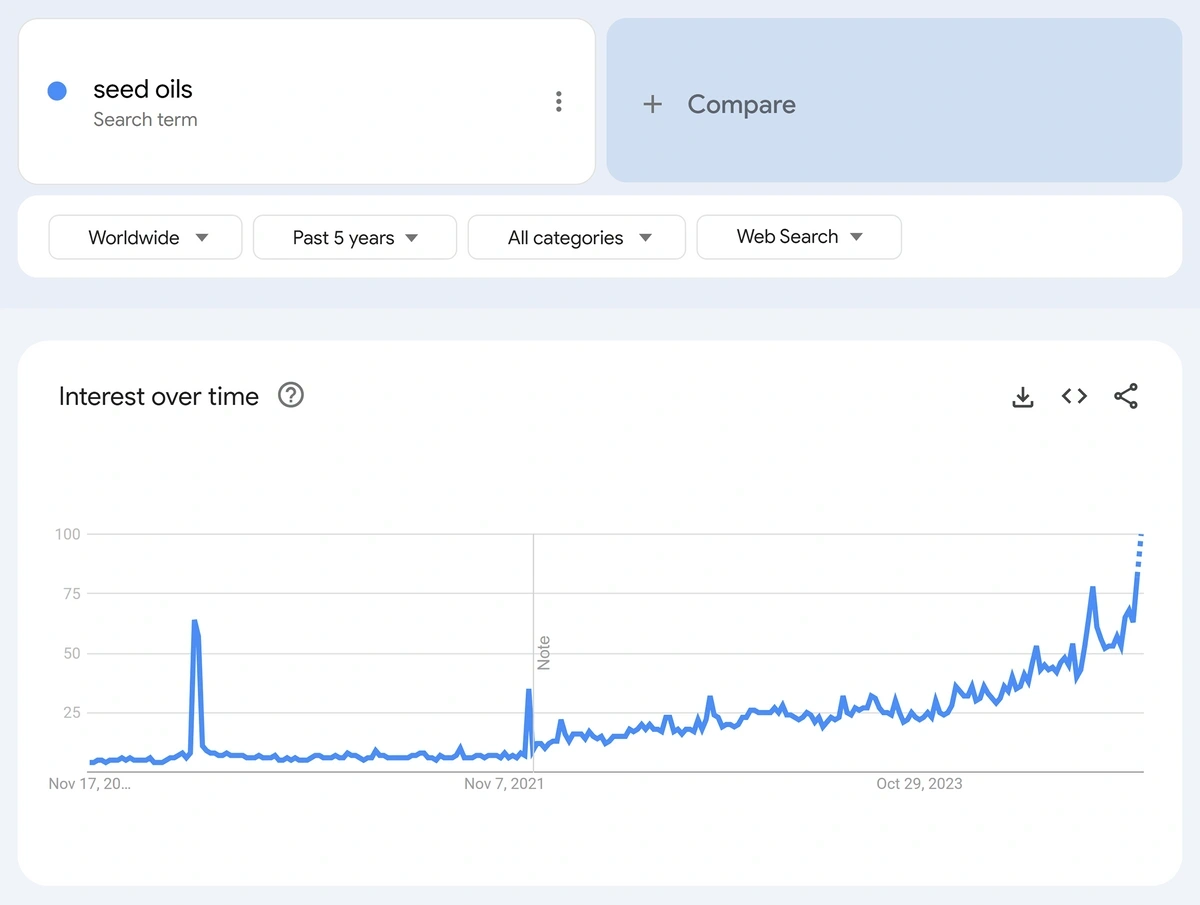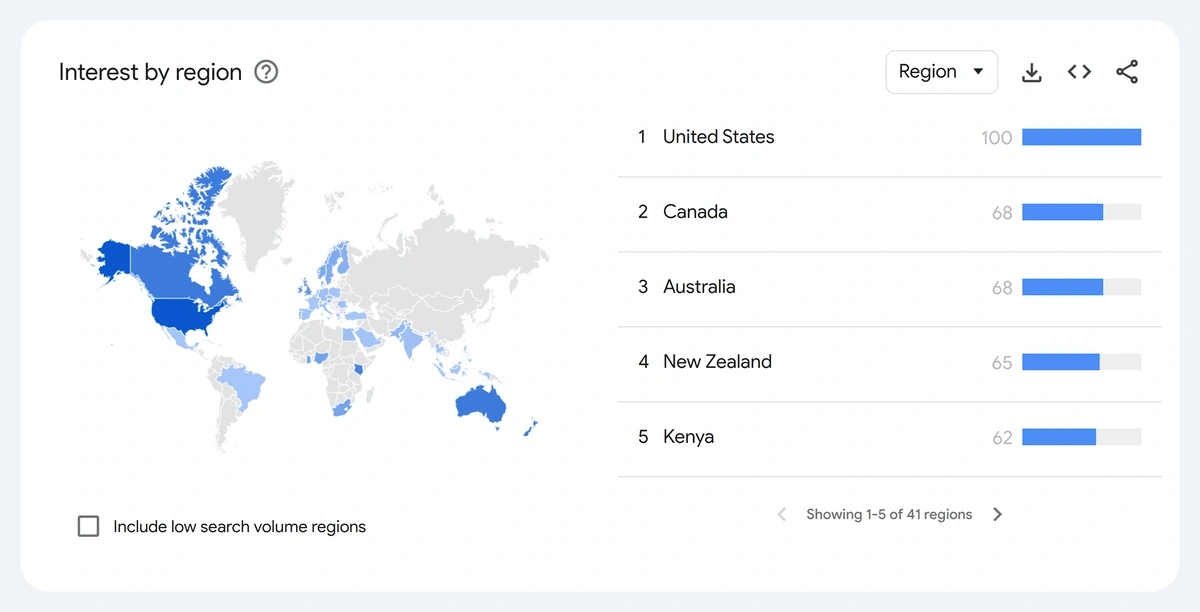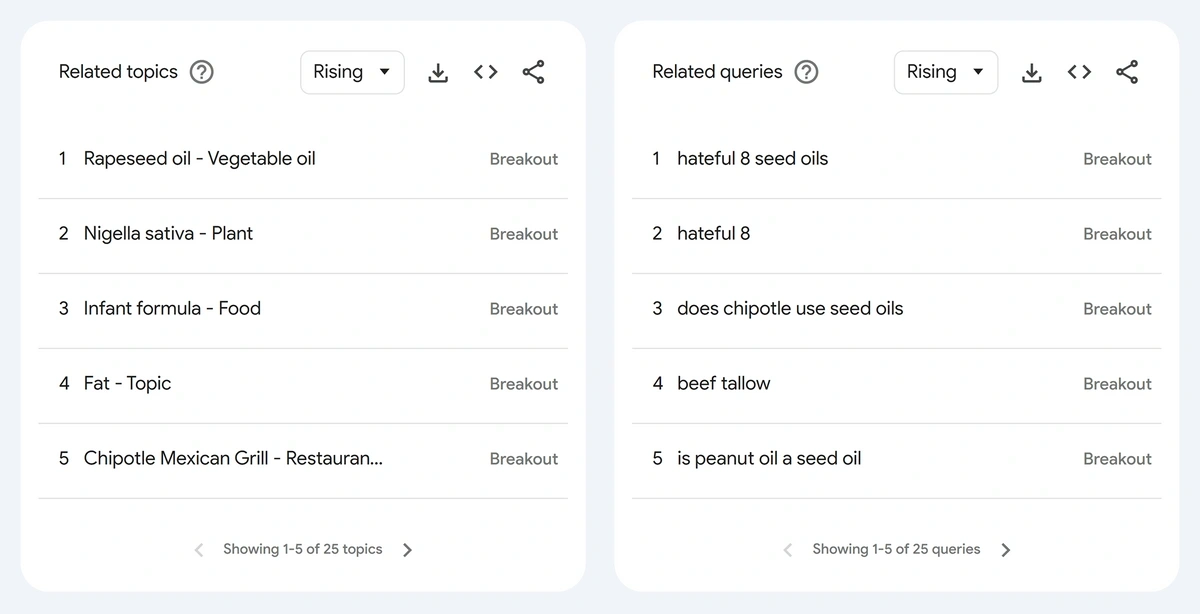
What Is Google Trends? Guide for Marketers & Entrepreneurs
First launched in May 2006, Google Trends has since established itself as one of the top search-tracking databases. Millions visit the website every month to view and analyze the vast collection of Google search data.
What Is Google Trends?
Google Trends is a free tool that analyzes search term popularity across multiple regions and languages.
Google Trends tracks dozens of metrics. The ‘Trending Now’ tab is a hub for relevant Google searches, displaying data related to:
- Search volume (monthly searches)
- The duration of a trend
- Related search queries.
Marketers and e-commerce professionals benefit from the wide variety of insightful data in Google Trends.
Google’s John Mueller recommends that marketers choose topics that are directly relevant to the readers they want to attract:
You don't have to create pages to cover every possible related search term. It's important that the content which you publish actually adds value to the web overall and that it doesn't just repeat what others have said. Be selective: focus on your own expertise, focus on your users that are likely to be relevant for your business.
– John Mueller, Google Search Relations team lead
The right trending topics can inform targeted promotions, boost sales, and help develop content strategies that resonate with your target audience.
Build a winning strategy
Get a complete view of your competitors to anticipate trends and lead your market
Why Google Trends Matters for Your Business
Identify Market Interests and Demand
Google Trends is ideal for pinpointing market interest and consumer demand.
Stay in the Loop
Users can easily find what is trending on Google. The website provides an overview of the hottest topics worldwide.
For example, live search volume and recency filters can be incredibly valuable when conducting market research for newsletters.
Get There First
Trends are, by definition, fast-paced. Therefore, the window in which to capitalize on a trend or news event can be incredibly narrow.
The ability to zero in on search trends in the past 24 hours, or even the last four hours, makes Google Trends invaluable in this respect.
Pinpoint Trends
Searches can also be broken down geographically into countries or regions. This appeals to niche marketers who want to investigate specific markets.
Develop Product Ideas
Trend breakdowns reveal further information, including related topics and searches. These can be analyzed to identify other areas that a marketer’s audience may be interested in.
Optimize Content and SEO Strategies
Marketers can use related queries to inform content creation for blog posts or videos.
For instance, by searching “supplements”, a health foods retailer will find that the search engine query “supplements to reduce body fat” is gaining traction.
From this, content specifically addressing the reduction of body fat can be created and used to drive traffic toward their brand.
A popular Google Trends-related query for “supplements”.
This strategy can also be used in niche scenarios to address a specific subset of the target audience.
When used in conjunction with other marketing tools, this can make for an immensely powerful marketing strategy.
The Semrush Position Tracking tool is the perfect partner to Google Trends. Comparing target keywords against other companies can reveal potential opportunities to get ahead of the competition.
Together with the related query search in Google Trends, entrepreneurs can devise a sophisticated SEO-backed content plan.
Make Data-Driven Decisions
Comparing contrasting ideas on Google Trends is a great way of gauging consumer sentiment. Analyzing the changes in search demand for opposing concepts or different types of similar products can be very insightful.
For example, if you have identified boucle upholstery fabric as something that is trending on Google, you can use Google Trends to compare the search volume for different types of products:
Google Trends comparison between boucle products.
As can be seen above, searches for “boucle chair” far exceed any of the other four boucle products and have done so for almost four years.
In contrast, “boucle pillow” and “boucle dog bed” searches are comparatively low and may, therefore, have a smaller pool of potential clients.
Assuming a marketer is now interested in selling boucle chairs, other popular chair materials can be compared to indicate their prospective demand.
Google Trends comparison between chair materials.
Although searches for boucle chairs have slowly risen over the last few years, it is clear that leather chairs are still far more popular and may eat into the potential market as a result.
However, further down the page, viable markets can be identified by looking at the regional breakdown.
In this instance, Australia has a comparatively larger share of people searching for boucle chairs than the global average.
A Google Trends comparison between chair materials broken down by country.
Alongside this, Semrush’s Keyword Magic Tool provides personalized metrics for keywords from a large database. Together, these can be combined to provide further data-driven insight.
Getting Started with Google Trends
Performing a Basic Search
A simple starting point for any marketer is a basic search.
Under the “Explore” tab, any search term can be broken down to reveal interesting data.
Search Interest Over Time
After setting preferences for geographic region, time frame, category, and type of search, users will be presented with a screen that looks like this:
Google Trends searches for Instagram in the US.
Above is an example of a basic search for “Instagram” in the US, dating back to 2004, before its inception.
The graph shows a sharp increase in searches in the years following Instagram’s late 2010 launch, a peak in search interest in July 2019, and a relatively slow decline since.
Note: Google Trends presents searches in relative terms rather than as raw figures. In other words, November 2013’s search interest of 50 is half that of the peak 100.
Regional Map
Scrolling down, further geographical data is available:
Google Trends search interest for Instagram broken down by US state.
Again, all data is relative. The state in which Instagram is most searched for on Google as a fraction of total searches is Hawaii, with a score of 100. On the other end of the scale, South Dakota has a score of 41.
This doesn’t mean Hawaii sees more than twice as many Google searches for Instagram as South Dakota. However, out of all searches conducted in Hawaii, a much larger proportion is for Instagram than is the case for South Dakota.
Related Topics and Queries
The final section of the page displays related search data.
Google Trends related searches for Instagram.
These two tables serve as a jumping-off point for other simple searches. Here, you can browse related topics and queries, adding further context to your researched search term.
Interpreting Crucial Data
It's important to look beneath the surface when analyzing Google Trends data.
Peaks and troughs in search demand will often be linked to external factors, be it news-related, seasonal preferences, or holiday traditions.
It’s often worth scanning through Google News to see if there is a key driver behind a trend, particularly if searches appear to be heavily localized.
It's also important to know that Google can sometimes drive searchless traffic spikes by surfacing articles via Google Discover.
How to Apply Google Trends
Content Ideation and Planning
When it comes to content ideas, Google Trends is the starting point for many entrepreneurs.
Beginning with a broad term related to your industry can get the ball rolling for ideas.
Google Trends searches for “cheese”.
The example above clearly shows the seasonality of searches for cheese. Google searches are relatively low in the summer months before peaking every December around the holiday season.
Google Trends searches for “yogurt”.
Conversely, searches for “yogurt” hit an annual low point each December and peak in the summer months.
Google Trends searches for “milk”.
While searches for “milk”, although varying, show few signs of seasonality.
Putting this data into a real-world setting, someone working in the dairy industry in England can filter to their geographic location and compare the above examples.
Google Trends comparison between dairy products in England.
As can be seen above, the overall search demand for yogurt is significantly lower than milk or cheese – a trend that appears to be becoming more pronounced.
Additionally, in contrast to worldwide results, yogurt searches appear to peak in January before tailing off each year.
It is also notable that although milk has the highest search demand for most of the year, cheese surpasses it during November-December, which can be seen in closer detail by reducing the time scale of the graph.
Google Trends comparison between dairy products’ search interest in England (over five years).
These are all potentially vital insights that can inform marketing, promotion, inventory decision-making, and much more.
Semrush’s Content Dashboard is a brilliant way to put all of the above into practice. With this, you’re able to conduct further background research on topics as well as implement SEO content templates and SEO writing assistants.
SEO Optimization
Research into SEO can be facilitated with Google Trends.
For example, someone working within the beauty and wellness industry may search for a broad term like “moisturizer”.
Google Trends top related queries for “moisturizer”.
In doing so, they would find that consumers are increasingly interested in tallow, specifically beef tallow, as a key ingredient. Together with further research using Semrush’s Keyword Overview tool, this can potentially inform the direction of a new product launch.
Optimizing Product Listings
Google Trends is an excellent tool for finding out what exact wording people are searching for. Product listings can be optimized by comparing search result data to rank above competitors selling similar products.
Google Trends comparison for variations of USMNT jersey searches.
As seen above, experimenting with the wording of searches will yield different results. The four examples are all three-word descriptions of the same thing – a US men's national soccer team jersey made by Nike – but search demand varies dramatically.
Analyzing the results, the two search terms that include “shirt” instead of “jersey” were more common worldwide. As the word “jersey” is a predominantly American term, this is worth considering if you’re a sports retailer based outside the US.
It’s also worth noting that the two more common searches each include “usa” rather than “us” or “usmnt”. This may lead marketers to believe that “usa” is the best term for optimizing their product listing. Further comparisons could then help to draw firmer conclusions on what is trending on Google.
Combining Google Trends and Exploding Topics Pro
As previously mentioned, combining Google Trends with other tools is the best way to gain a deeper understanding and make full use of the data at your disposal.
Exploding Topics Pro is an outstanding tool to use alongside Google Trends to get the most out of your research. With our proprietary software, you can unearth new market opportunities, discover trending topics before they truly take off, and find emerging technology all in one place.
The Exploding Topics API is designed for a slightly different use case than the Google Trends API.
While Google Trends analyzes historical search data to show what people are currently interested in, Exploding Topics leverages proprietary datasets to go a step further. It identifies rising trends and topics that are gaining traction and are likely to surge in popularity soon.
While Google Trends is a fantastic tool for analyzing search data, certain Google Trends alternatives, such as Exploding Topics Pro, make it easy to spot the newest trends across a variety of categories before they become mainstream knowledge.
You can compare the Exploding Topics Pro vs free plans here to see exactly what you get.
Below, we’ll provide a worked example of Exploding Topics Pro in action to showcase how using multiple tools can provide a fuller picture:
Spotting an Emerging Trend with Exploding Topics Pro
The simplest way to find emerging trends on Exploding Topics Pro is via the Trends Database tab. Here, you can set your search parameters within your chosen industry or category.
Exploding Topics Pro trends database search criteria.
In the case above, the search has been sorted by growth to show the biggest positive change in search numbers within the given timeframe first.
In other words, the search terms gaining popularity the fastest over the last five years will be right at the top of the page.
In order to filter out any searches that have plateaued or peaked, we’ve selected “Exploding” under the growth tab. Under “Type”, selecting “Non-Brands” will restrict your results to concepts, objects, and anything else not directly associated with a brand – ideal for product ideation.
From the results page, we’ve selected seed oils as a potentially interesting avenue to explore:
Exploding Topics Pro “seed oil alternatives” search interest graph.
Clicking on seed oils will take you to a page with a more detailed, interactive graph. Here, you can view:
- Growth over a selected time frame
- Global Google searches for the previous full month
- A forecast based on recent data.
In the case of seed oils, with 1,600 global Google searches in the previous month, this is an emerging search trend.
However, the graph shows a steeper incline midway through 2025, supported by the forecast line into the following year.
With that in mind, seed oils look to be worth exploring further.
Exploding Topics Pro “seed oil alternatives” search breakdown.
Scrolling down the page, a description of the topic or brand gives further insight into the trend.
The adjacent channel breakdown shows the level of activity within multiple social media platforms, including LinkedIn, TikTok, and Facebook. This is ideal when deciding which platforms to focus content creation towards.
On the right are the key indicators of the trend. Looking at speed, seasonality, and volatility, seed oil is a rising trend that is unlikely to fluctuate heavily during the year.
At the bottom of the page are several related trends:
Exploding Topics Pro “seed oils” related searches.
Clicking on these related searches lets you drill down into the data for each one.
Validating and Analyzing Search Interest with Google Trends
Having delved into Exploding Topics Pro for initial research, findings can then be cross-referenced with Google Trends to build up a deeper understanding of the trend.
Google Trends searches over time for seed oils.
As with Exploding Topics Pro, Google Trends also shows a growing interest in seed oils, with some recent acceleration in the number of Google searches.
Google Trends search demand for seed oils broken down by country.
Further down the page, marketers can identify where the trend is most prevalent.
The US is clearly seeing the largest proportion of searches for seed oils, followed by several English-speaking nations.
Google Trends related searches for seed oils.
Finally, related topics and queries can provide further content and promotion ideas around the given topic.
With all this information, someone working in the food industry could:
- Write a cookbook based on seed oil alternatives
- Start a mini-series on YouTube or TikTok about the pros and cons of seed oils
- Produce SEO-focused articles to increase traffic on a health and wellness blog.
Refining Keyword Research with Semrush
In addition to Exploding Topics Pro and Google Trends, Semrush has an excellent array of tools to flesh out your research.
Tools like the Keyword Magic Tool can offer additional insight, especially from an SEO perspective.
Alternatives to Google Trends
For anyone looking for alternatives to Google Trends, Semrush Traffic & Market stands out as the complete solution.
Semrush Traffic & Market takes your market research to the next level with comprehensive traffic analytics, competitive intelligence, and real-time market insights all in one platform.
Ready to transform your trend research? With Semrush Traffic & Market, you'll get instant market overviews, detailed traffic analytics, and actionable insights that help you:
- Spot emerging market opportunities before your competitors
- Make data-driven decisions with comprehensive competitor analysis
- Develop targeted content strategies based on proven search demand
- Track your market position across multiple regions and industries
Don't just follow trends—get ahead of them. Start your free trial of Semrush Traffic & Market today and unlock the full potential of your market research.
Stop Guessing, Start Growing 🚀
Use real-time topic data to create content that resonates and brings results.
Exploding Topics is owned by Semrush. Our mission is to provide accurate data and expert insights on emerging trends. Unless otherwise noted, this page’s content was written by either an employee or a paid contractor of Semrush Inc.
Share
Newsletter Signup
By clicking “Subscribe” you agree to Semrush Privacy Policy and consent to Semrush using your contact data for newsletter purposes
Written By


Fabio is a research associate at Exploding Topics. Since 2021, Fabio has researched, written, and edited articles for the Explo... Read more


